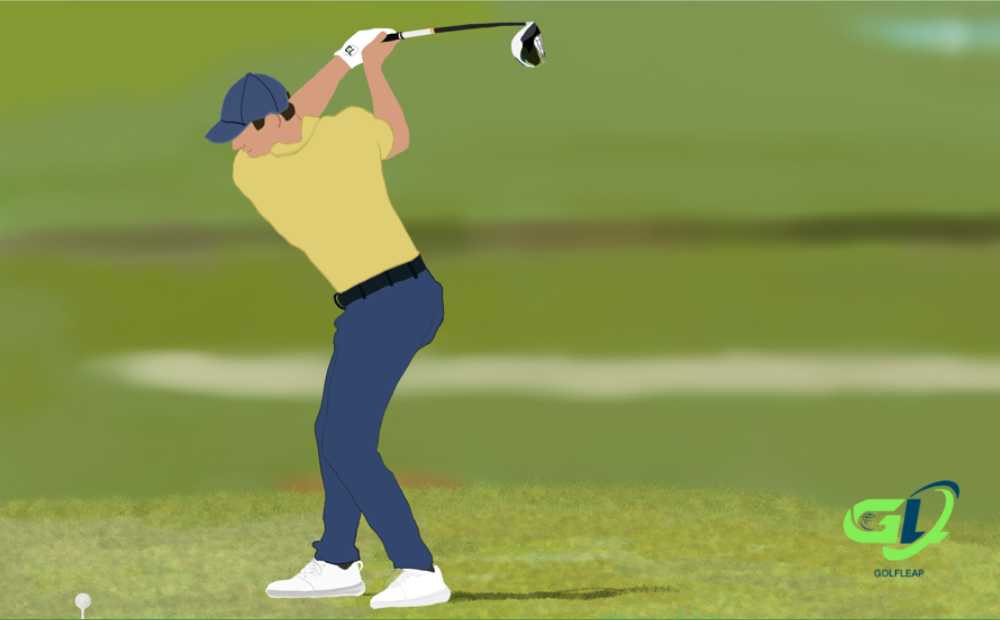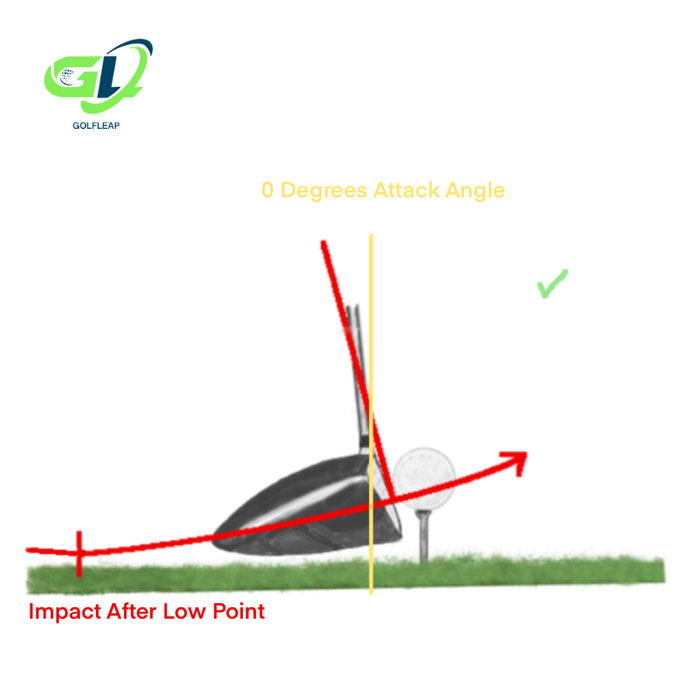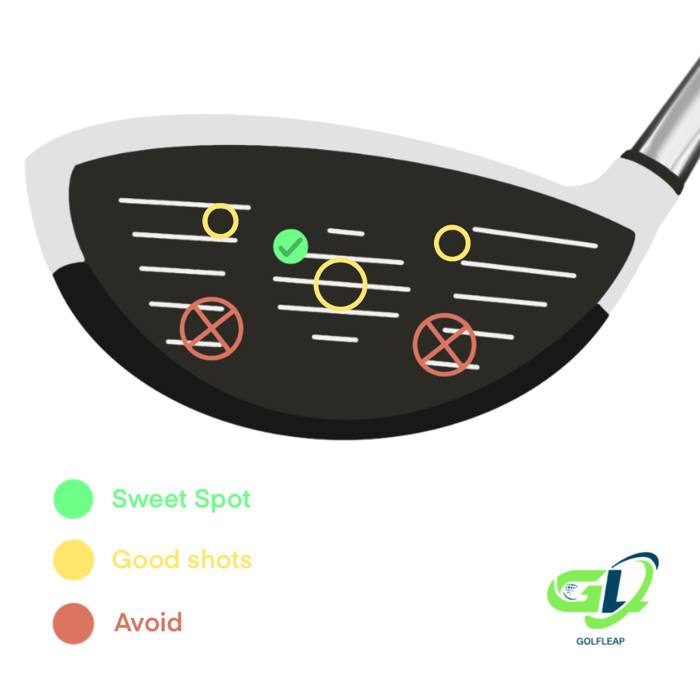
As a golfer, getting the driver right can be the hardest but most rewarding accomplishment. Most will agree that if you’re capable of hitting a consistent and far drive, you’ll drop your golf handicap by a ton as it sets you up for more forgiving golf clubs like your 7- or 8-iron.
Unfortunately, most of us struggle most with hitting the driver, and no one blames you, as it is the hardest club in your bag. That said, if you’re slicing or hooking the ball, not hitting it far enough, or just unfamiliar with the fundamentals, we’ll cover everything you need to know in this post.
Below, you’ll learn the all basics of the driver, how to hit farther with the driver, where you should be hitting on the club face, how to play the driver, and so on. Let’s begin.
Table of Contents
The Importance of Your Driver Swing
Want to dominate in golf? Learn to hit the big stick farther than your opponents.
There’s a strong correlation between driving distance and top-performing golfers. Look at some of the best golfers out there like Tiger Woods, Phil Mickelson, Dustin Johnson, and Bryson DeChambeau. They don’t necessarily have the best accuracy with their drivers, but they’ve got some of the longest drives on tour.
As a beginner, you’re most likely not going to drive the ball that far. But, we can’t stress how important it is to focus on distance with your driver. By hitting it farther, you’ve set yourself up to use the clubs you’re most comfortable with like your shorter iron and wedges. That’s how you lower your handicap, so make your driver a priority!
Remember guys, at the age of 49, Phil Mickelson was asked if he would consider retiring to play at the Champions Tour. Sure enough, he accredited his ability to still compete in the PGA Tour at his age due to his ability to still hit bombs with his driver. Who would have thought that he would end up winning the PGA Championship the following year in 2021!
Hit It Rather Accurately
Hitting it far with the driver is key, but it’s pointless if your drives are never in play. You want to stay in control of your golf game, and a good way to start is to drive the ball as far as you can while managing to stay relatively accurate.
Notice we said ‘relatively’ as you don’t need to be precise with your driver shots like you would for your irons and wedges. With the driver, you’ve got the whole fairway to work with so you just need to be somewhat accurate. Therefore, when practicing with your driver, feel free to go hard at the ball but make sure you still have a general target in mind.
We also want to say, that ‘going hard’ at a ball doesn’t mean ripping it at the ball at 100 percent. One of the most important elements of a good golf swing is simplicity and smoothness. Smashing the golf ball with all your might and losing your balance, will not create a good golf shot in general.
Why Is the Driver So Much Harder to Hit?
The driver is second to none when it comes to difficulty. As most would know, that it’s the big stick that will fish out all the swing flaws you never knew you had.
First off, the driver is significantly longer than the rest of your golf clubs. As a reference, the standard length of a driver is 45 inches and your average 7-iron and 5-iron are just 37 inches and 38 inches respectively.
That’s a big difference and something you should definitely keep in mind off! Why? Well, a longer club means that the clubhead is farther away which is a lot harder to hit accurately compared to your shorter clubs.
A good analogy for this is trying to hit a baseball off a batting tee with baseball bats of different lengths. It’s much easier to hit a ball off the tee when you’re positioned for a shorter bat than to hit off a tee adjusted for a longer bat. But the downside of using a shorter bat is that the ball won’t go nearly as far as when you hit with the longer bat. This applies the same way to your golf clubs!
Your driver also has the steepest loft compared to the rest of your golf clubs (except for the putter), resulting in less forgiveness/ harder to hit. There’s a rule in golf that goes:
Shallower Loft (More Loft) = More Forgivness
When you combine its long club length and steep loft with a faster swing, the driver becomes extremely challenging and for many, unpredictable.
But don’t give up! Struggling with the driver is normal. The best solution is to practice more and practice correctly. Below, we’ll show you how to hit a driver the right way and give you useful tips along the way.
Starting with the Basics
The Strong, Weak, or Neutral Grip
Picking between the interlocking, overlocking, or baseball is important for your golf swing, but for the driver, how you position your grip is by far the most crucial.
A quick summary for the grip positions (or grip strengths): The strong grip is one where both hands are rotated away from the target, the weak grip is one where both hands are rotated towards the target, and the neutral grip is somewhere between where the top of your hands are facing close to the opposite of each other.
Here are the grip strengths in more detail:
- The Neutral Grip
- The neutral grip is likely the first grip position you learned. This grip is ideal for you if you’re hitting your shots relatively straight and/or even play both shot shapes. To have a neutral grip, it’s simply the default grip you started with, regardless if it is interlocking, overlocking, or baseball.
- The Strong Grip
- Most golfers struggle with an open clubface through impact. This is very common with the driver resulting in slices and weak fades. For golfers struggling with an open face through impact, changing to a stronger grip allows the clubface to rotate more inward resulting in a more squared face through impact. Also, if you have an out-to-in swing, a stronger grip may encourage a more in-to-out swing.
- The Weak Grip:
- Opposite of the strong grip, the weak grip is well suited for those struggling with hooking the ball through impact or an overly in-to-out swing path. In general, switching to a weak grip isn’t as common.
One thing every grip shares is grip pressure. Don’t clamp down on the grip, that’ll tense up your forearms and chest, ruining your swing. A good feel for the right amount of grip pressure is with a wet towel. Twist the towel just to the point when the water is about to drip, that’s the pressure you want on your grip.
The Right Stance
- Stand shoulder widths apart. Make sure that for the driver, you’re standing wider than how you would with your irons.
- The more power you’re generating, the wider you’ll want to stand.
- Bend your knees slightly, just enough where you feel stable.
- Have a 50/50 weight distribution at setup. You may also try 60 percent on your lead foot and 40 percent on the other but you should never have more weight on your back foot before your takeaway.
The Right Posture
- While remaining relaxed, make your back straight but avoid overarching it.
- Tilt your upper body forward from your by roughly 40 to 45 degrees.
- Drop your hands and grip your golf club.
Tee Height
Before you even think about your swing, you need to know how to tee the ball properly. The standard height to tee your ball on is 1.5 inches. If you have a hard time eyeballing the height during the course, simply use the height of a golf ball as your reference.
Ball Positioning
For the driver, the ball should be placed on the instep of your front foot and that the ball does not pass your toe. This is the ideal set-up for a squared impact, resulting in a straighter golf shot. Make sure to get this right, as too much to the lead foot may encourage a slice.
How to Hit a Driver The Right Way
Everything you’ve read so far should set you up with a great foundation to start learning your driver. With that said, let’s dive into how to execute the right swing with your driver.
The Driver Swing vs Iron Swing
The general fundamentals of the golf swing are the same for the driver and iron. However, there are a few distinctions between the two. For instance, we’re taught to hit up on the ball with the driver while to hit down with the irons, but what does that mean?
Unlike most clubs, the driver is hit off a tee. This brings a slight, but important, change to how you should approach your golf swing as compared to how you’ll usually swing with your irons. Specifically:
- Hitting the ball after the low point.
- Making an impact at the ideal attack angle.
Hitting the Ball After The Low Point

The low point of the swing sounds exactly like what it means and is the main differentiator between your driver and the iron swing.
For irons, your impact point is before you reach the low point but for drivers, your impact point is after you’ve passed the low point of your swing arc. More specifically, the club makes contact with the ball when the clubhead is on the rise from its lowest swing point.
That’s what it means to ‘hit up’ on the ball, and it should happen naturally with the right set-up, tee height, and golf swing. You shouldn’t have to forcefully pull your driver towards you to create an upward swing.
Attack Angle with the Driver
The attack angle is the measurement of the clubhead alignment on impact compared to the horizon. For reference, a perpendicular club head-on impact relative to the ground is 0 degrees, and the more the clubface tilts towards the sky the more positive your attack angle is and vice versa.
To maximize distance with the driver, hitting up on the ball (positive attack angle) is a must. However, depending on the type of driver you’re using, this won’t always be the case as it also depends on how fast you’re able to swing your driver and how high you’re able to hit upon the ball through impact.
Not surprisingly, there’s a difference in attack angle between scratch golfers and bogey golfers (handicap of roughly 17 to 24). For scratch golfers, they’ll tend to have an attack angle of close to 0 degrees with their drivers. Whereas bogey golfers only have an average attack angle of -2.1 degrees with their drivers. This means, lack of attack angle and slow swing speed, is what causes a distance gap between most amateur and experienced golfers.
What A Good Swing Feels Like
Through impact, the swing should feel comfortable and smooth. If you’ve topped the ball or popped it up, you’ll notice the shock of the impact on your wrist right away. A good analogy is similar to chopping a piece of wood, if you split a piece in one go, it’ll feel smooth and effortless. If not, you’ll immediately feel pain from the shock. The same applies to your driver and the ball.
Swing More Horizontally
With the driver, you’ll have a more horizontal/ flat swing compared to your swing with the irons. Don’t try need to adjust too much for this. As long as you’ve set up your posture, ball positioning, and stance correctly for the driver, you’ll create a more horizontal swing naturally.
Hitting the Sweet Spot

Earlier, we said to prioritize distance and accuracy for your driver. But there’s still one component missing to your driving potential, and that’s a square impact on the sweet spot.
You’d think the sweet spot is located at the center of the clubface, but the real sweet spot of the driver is located slightly towards the toe and slightly up from the center of the face. Hitting here creates a winning ball pattern with low spin, high launch, and a slight draw. What’s can be better than that?
Where you don’t want to hit with the driver is on the low on the heel of the club. Making an impact here creates a low launch, high ball spin, and a slight slice ball flight. That’s the worst.
How to Always Find the Sweet Spot of Your Driver
There’s no secret to finding the sweet spot. The best way to hit the sweet spot is to practice for a consistent and good swing.
Besides just practicing, you should take advantage of the resources available. One of the best ways to determine if you’re hitting the sweet spot on your driver is with some impact tape or so whiteboard markers. Simply cover the face with tape or marker. After each hit, you can then see where you’re making your impact on the clubface. This way, you’ll better have a better on how to adjust your swing accordingly.
Getting fitted for your driver is also a great idea! How long your shaft is, its stiffness, and the loft of your driver will affect your impact accuracy and swing quality. It’s always best to practice with the right driver so you don’t pick up any unnecessary habits. If you’re serious about golf, give yourself a budget to buy a driver that’ll fit you.
On Impact
For the driver, you must have most of your weight on your lead foot. We’re here to generate speed and power, and weight distributing correctly is key. Aim to have at least an 80 lead / 20 back weight ratio on impact for the driver.
Besides power, putting more weight on your lead foot through impact also helps with stability for your follow-through. Even at a 70 lead/ 30 back weight distribution through impact may take you off your balance. At your finish, this may lead to you tripping over!
Helpful Driver Tips
Slow Down Your Backswing:
Starting with a slow, on-tempo backswing is key for a controlled and fast downswing. Most amateurs believe a fast backswing results in a faster clubhead speed through impact, but that’s false. A fast backswing sets you up for a bad downswing as you’re not able to focus on getting the right body rotation, weight distribution, and arm positioning when you’ve reached the top of your backswing.
That said, slowing down your backswing to a tempo of 1 backswing : 3 downswing will dramatically improve your driving consistency and swing speed.
Use the backswing to focus on rotating your body and distributing your weight properly. When you’re on top, uncoil your hips followed by your shoulders, step into your lead foot and let the club accelerate through impact.
Play Your Miss
Learning to play your miss is one of the best golf tips out there, and it all starts from understanding and playing according to your tendencies.
For instance, if you’ve been slicing your shots all day, instead of aiming straight at the target, you should aim more left (right if you’re left-handed) and play the slice! That way, the ball has a higher chance of reaching your target, even if you’re slicing it!
This works if you have a more natural fade or draw on your driver as well! We see professionals like Bubba Watson play his slice magnificently all the time!
So, capitalize on your style and aim according to your tendencies! If you do this right, you’ll start creating scenarios that have the highest chance of making sure you stay in play. That’s the whole point! Don’t avoid the slice or hook if you know how to make good use of them.
Keep Them Loose and Your Swing Will Be Smooth
Ripping the driver with your bulky gym muscles won’t give you a fast golf swing. Clubhead speed is at its best with the proper execution of body rotation and weight distribution.
The most frequent mistake is to tense up your forearms and upper body. Keep them loose and your swing will be smooth. Let the club do the work and focus on having your rotation pull your arms through impact. You’ll create the most consistency and distance with shots like these.
Don’t Overswing
Overswinging happens when the club goes past parallel on the top of your backswing. Making this mistake disrupts your spine angle and over-hinges your wrist. This results in misalignment with your swing plane and doesn’t improve your clubhead speed.
Most of the time, an overswing is a result of a few reasons: not being aware of what parallel on top feels like; trying too hard to generate power, causing you to over-rotate; or rushing your backswing.
Slow down your backswing and have someone take a photo of you at the top. If you’re past parallel, adjust accordingly and for your next swing, imagine picking up just half of your original backswing.
Common Questions With the Driver
How Do I Rotate More?
Getting to parallel on top with your driver can take some time to achieve, particularly if you’re new to the sport. Usually, you’d want to incorporate some golf exercises in your daily practices to help you get that rotational flexibility you need. Your goal should be to get parallel on top without bending your lead elbow.
Most golfers have never trained for a proper golf rotation. They end up compensating for their lack of rotation by bending their lead elbow to force a parallel club on top. When they transition to the downswing, they have no choice but to straighten their arm for impact, putting off their swing path and aim.
Follow-Through
After impact, follow through with your driver and let its momentum carry the rest of your shoulders inward of the target line.
At your finish, stand with most of your weight on your lead foot with your back foot’s heel off the ground, supported on your toes. Keep your hips and chest square/ facing the target line and standing up tall.
Finally, let the shaft fall somewhere down your back and maintain your position until the ball lands. If you’re more flexible, you can try letting the shaft fall behind and across the back of your neck with the club pointing close to the target line. You should be able to stay perfectly balanced as you hold your finish.
We advise you to never underestimate your finishing position. A good follow-through will do specific things in your golf swing that’ll help create good golf shots.
How to Hit the Golf Ball Straighter
Most of you may struggle with slicing the ball. If you’re hitting a slice or hook after implementing what we covered so far, try these tips (together or individually):
- At your golf set-up, open up your lead foot by facing it 45 degrees from the point if your feet were parallel.
- Also at set-up, you can try to step your lead foot back by a quarter of a foot.
- Practice hitting balls straight with half swings, transition to a full swing later on.
- Don’t swing at 100 percent, tune it down a bit to 75 to 85 percent.
Finally, don’t focus on hitting a straight drive. That’s probably one of the hardest shots to hit. Focus instead on hitting a repeatable, predictable shape (fade, draws, slice, hook, straight). This means, allowing your instincts to shape the type of flight path you want with your ball. This takes lots of practice, but it’ll translate well onto the golf course and to your score!
If you want some extra assistance, consider getting some of the straightest golf balls in the world!
What Now?
Practice, practice, practice. The driver is such an important part of your golf journey, but the only way to get better with it is by practicing persistently. Once you start hitting consistent and good drives, your handicap will start to fall and you’ll begin to dominate your group.
Remember, stay relaxed and let the club do the work. Keep your swing thoughts to a minimum and make sure you’ve incorporated the fundamentals: grip, posture, stance, and tee height. Master your tendencies to play your misses, slow down your backswing, and nail it on the sweet spot. Finally, hit it far and relatively accurate. With all these habits set in stone, you’ll stay in control with the driver and hit bombs.
If you’re still looking to improve your golf game in other areas, check out these four articles:
- How to Play Golf Properly?
- The Importance of Knowing Your Golf Club Distances
- What’s My Golf Handicap?
As always, feel free to come to us with any of your questions!

